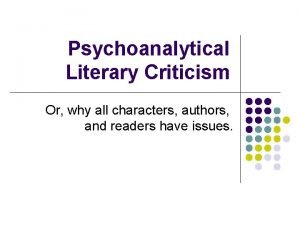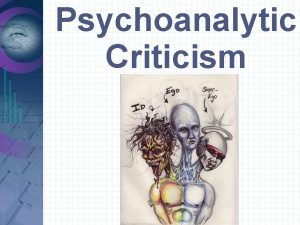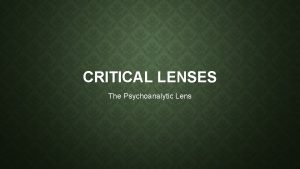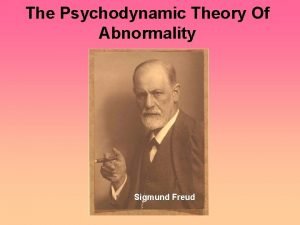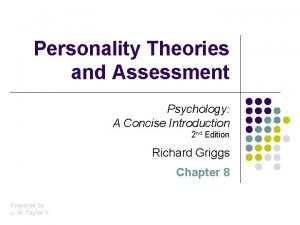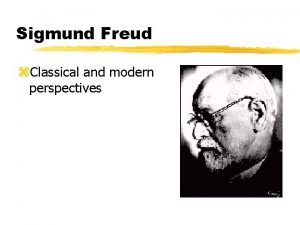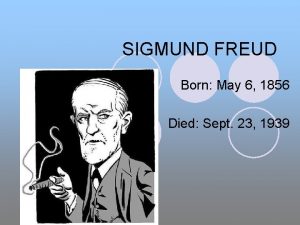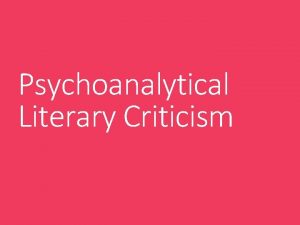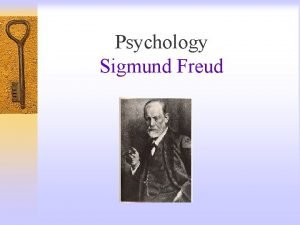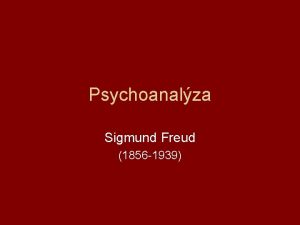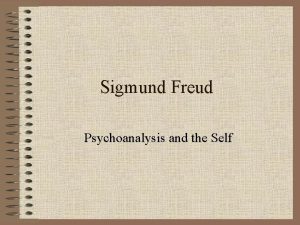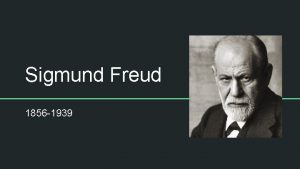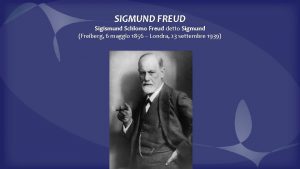Psychoanalytical Criticism Sigmund Freud The unconscious activities of











- Slides: 11

Psychoanalytical Criticism

Sigmund Freud The unconscious activities of our mind Guilt Sexual desires Shameful experiences FEAR 1856 - 1939 Austrian psychiatrist and founder of psychoanalysis Dreams

The Unconscious Mind

The Beginning of Psychoanalytic Criticism �Freud’s belief in the significance of dreams leads to the study of psychoanalytic criticism �They are also revealed in creative arts – such as in literature �“A work of literature is a fantasy or a dream” �Analyzing literature is similar to analyzing dreams – also applies Freud’s theories

Analyzing Literature (in Depth) �Manifest content & latent content �Manifest content – the surface of a work �Latent content – the real desire (hidden) �because writers often express their secret unconscious desires and anxieties indirectly in text �Psychoanalytic literary critic tries to expose the latent content of a work

Analyzing Literature (in Depth) �Latent form – writers often disguise their unconscious mind through principles such as � Symbolism - the repressed object represented in disguise � Condensation – thoughts or persons condensed into a single image � Displacement – anxiety or wish displaced onto the image of another

Common Strategies �Oedipus Complex �Phallic Symbols �Central Problems—associated with sexual awakening, dependence/independence conflict, sibling rivalry, inferiority complex, separation/desertion anxiety.

Personality Model �In a later generation, psychoanalytic critics analyze characters within the novel using Freud’s famous Personality model. �Critics see them as a projection of author’s psyche �Personality structure: � Id –unconscious part of the psyche that serves as a storehouse of our desires, wishes, and fears. � Superego – the conscience, criticizes and prohibits his or her drives, fantasies, feelings, and actions. � Ego – the thinking part of both id and superego, the “reality”

�Id –unconscious part of the psyche that serves as a storehouse of our desires, wishes, and fears. �Superego – the conscience, criticizes and prohibits his or her drives, fantasies, feelings, and actions. �Ego – the thinking part of both id and superego, the “reality”

Question To Consider When Analyzing a Text � How do the operations of repression structure or inform the work? � Are there any oedipal dynamics - or any other family dynamics - at work here? � How can characters' behavior, narrative events, and/or images be explained in terms of psychoanalytic concepts of any kind (for example. . . fear or fascination with death, sexuality - which includes love and romance as well as sexual behavior - as a primary indicator of psychological identity or the operations of ego-id-superego)? � What does the work suggest about the psychological being of its author? � What might a given interpretation of a literary work suggest about the psychological motives of the reader? � Are there prominent words in the piece that could have different or hidden meanings? Could there be a subconscious reason for the author using these "problem words"?

Questions?
